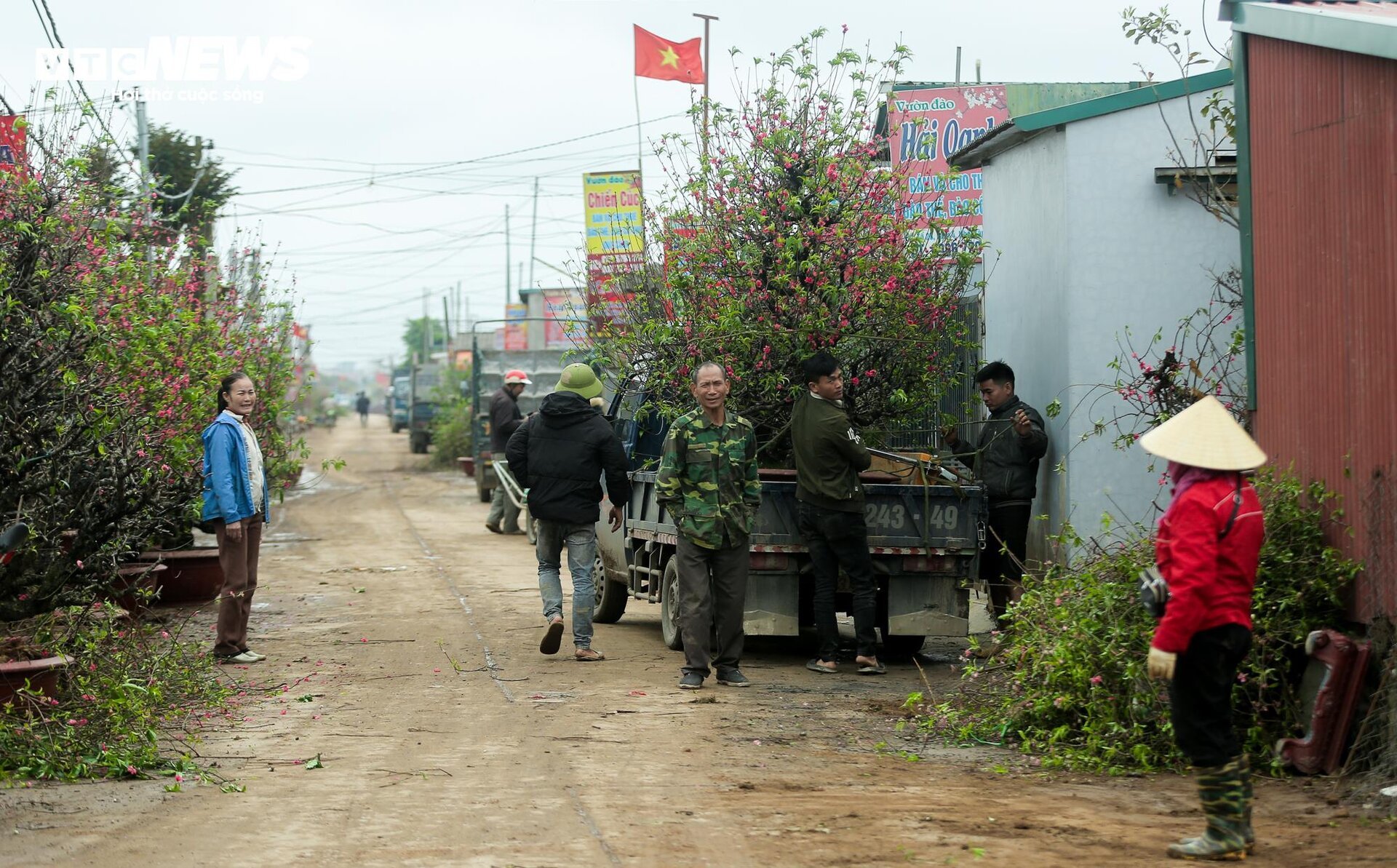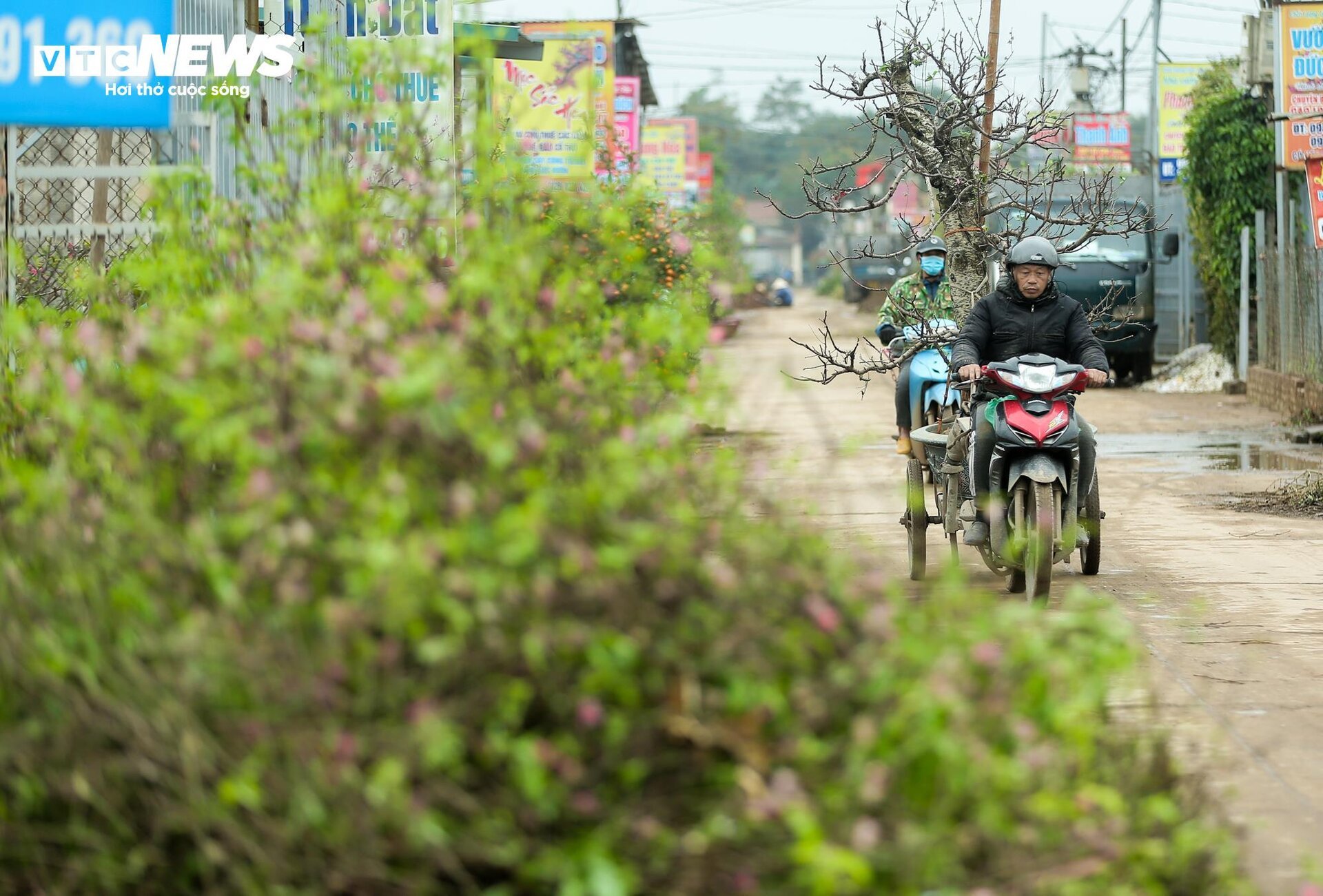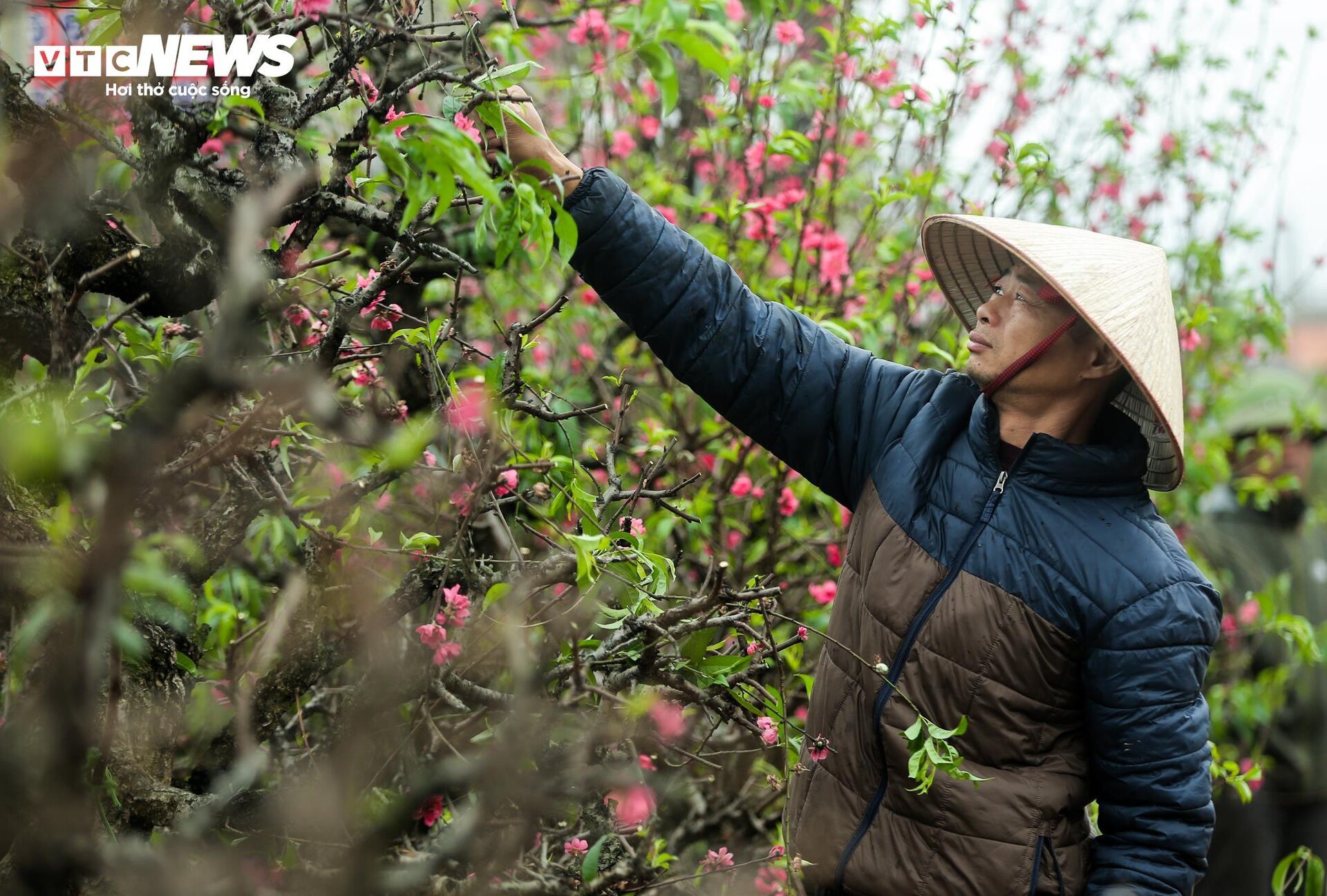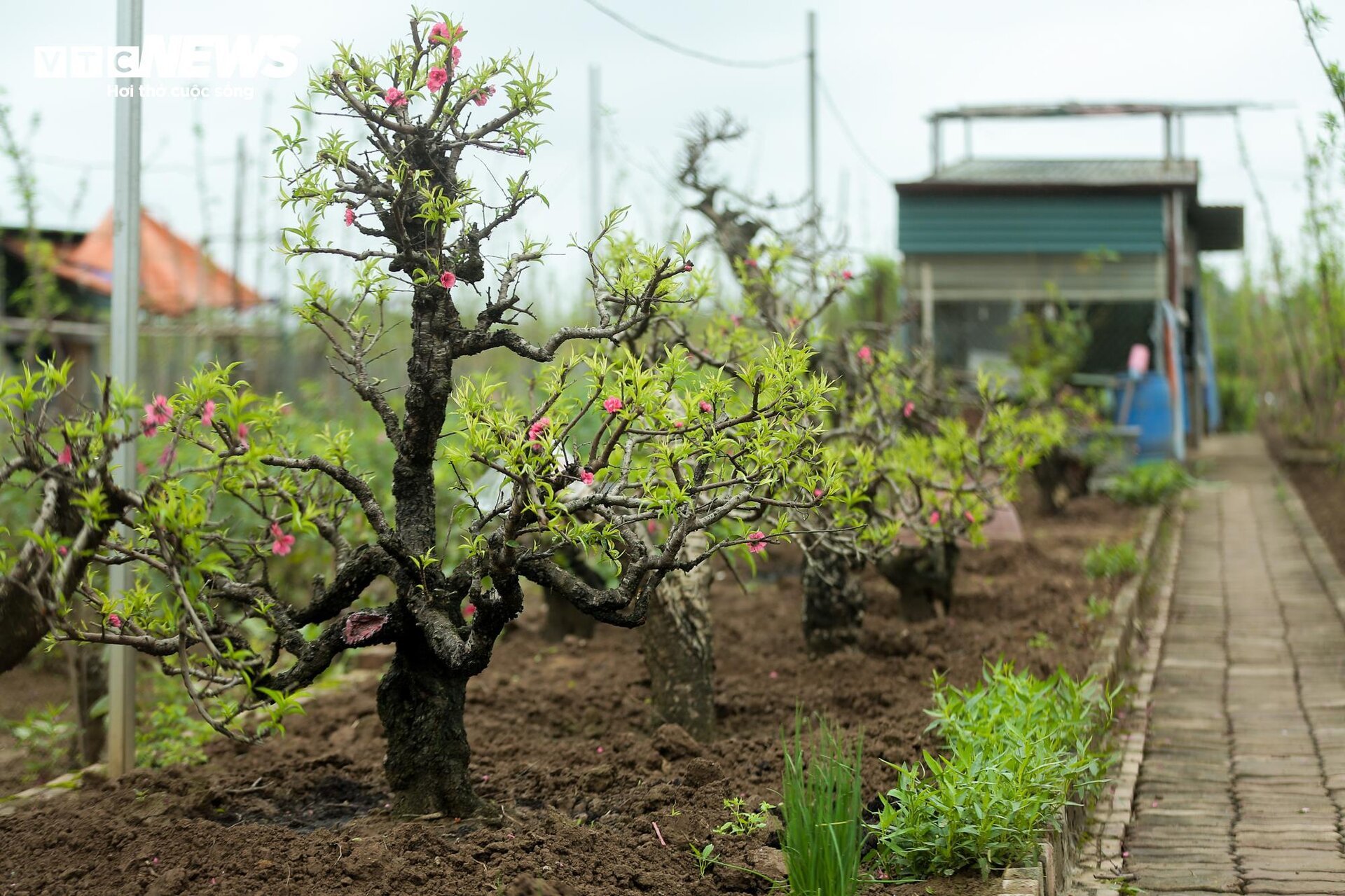
Every Lunar New Year, Nhat Tan peach growers (Tay Ho district, Hanoi) are busy collecting trees for rent to plant and take care of them in time for the next year’s Tet festival. The work here is no different from the days leading up to Tet, with busy streets and trucks carrying peaches to the gardens.

According to gardeners, reviving peach roots takes a lot of time and effort. After bringing the peaches back, the gardeners have to replace the soil, prune the roots, remove manure, water the trees, keep them moist… then, cut the flowers, trim the branches to help the peaches recover after the “strenuous” time of blooming during Tet.

Mr. Nguyen Manh Cuong (46 years old, Nhat Tan peach grower) said that in the past, many people sold peaches, but now, almost everyone in the village only rents them. One reason is that big peach roots are very valuable, with an age of up to tens of years, so the price is very high, few people dare to spend money to buy them for Tet. Besides, it is also impossible to find such old peach roots, so peach growers only rent them and take care of them carefully.
According to Mr. Cuong, this year the process of collecting peach roots after Tet took more time because the workforce was scarce due to the pandemic. When bringing the peaches back to the garden, he had to first trim the damaged branches, flowers, and young fruit so that the trees would not weaken. “The process of cutting and pruning branches and leaves for peach trees is a very important step, not wasting nutrients to feed the trees, helping the trees have more lush new branches, more buds and more flowers. For single-trunk trees, all branches on the tree must be removed, leaving only the main trunk 5-7 cm away from the trunk,” Mr. Cuong shared.

This peach garden owner also said that because there are many peach trees, he has to dig small canals to guide water inside and use long hoses to irrigate. In addition, in order for the new soil to have enough nutrients, he has to manually fertilize each tree. Every day, he prunes old withered branches to make way for new sprouts.

People are busy trimming branches, flowers, and young fruit to restore the trees after bringing them back to the garden.
After planting the trees in the ground, the garden owner has to water them and monitor them daily to deal with bad situations such as dead trees, rot…

Ms. Chien Cuc, the peach garden owner, said that it is much more difficult to promote root growth for old peach trees than to plant new ones, requiring experienced growers. When newly planted, the peach roots must always be kept clean, avoiding grasses and leaves on the root.
According to Ms. Chien Cuc, in recent years, in addition to traditional peach growing to cut branches for Tet, peach growers here have also increased the value of peach trees, not only serving the needs of customers but also increasing profits for the garden. “To have big peach roots with high growth ability, we also actively buy many forest peach roots from northern mountainous provinces such as Lao Cai, Son La, Lang Son… to graft,” the garden owner said.

After being brought back to the garden, the peach trees are sprinkled with lime powder to slow down the growth rate in the initial time, ensuring good tree development the following year.

Peach roots in Nhat Tan are going through the “rebirth” process to serve for next year’s Tet festival.









































